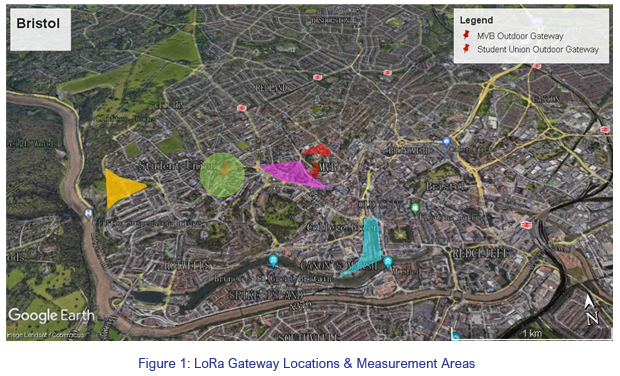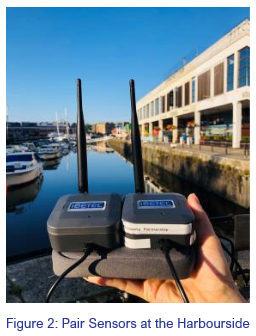In the Winter 2021 issue of the SWAN newsletter, we shared an article about a precursor project to SWAN’s work on LoRa, which was funded by the National Security Technology & Innovation Exchange (NSTIx). Building on the LoRa gateway deployments and sensors provided through this pipe-cleaning project, an initial measurement campaign has been conducted to create a database of reported Signal to Noise Ratios (SNR) from multiple locations on and near to the Clifton campus at the University of Bristol.
This work was conducted by Ms Yunchang Zhang as part of her MSc research project this summer to determine whether SNR can be a reliable indicator that a LoRa sensor has been spoofed from a different location as part of a cyber attack on the network.
Using gateways installed on both Merchant Venturers Building (MVB) and the Students Union, some 45 different measurement locations were visited at different times during the day (rush hour and outside of rush hour, see Figure 1 above) as well as recording the SNR for sensors situated in close proximity (Figure 2). Some examples of the reported SNR are given in Figure 3, with work ongoing to emulate and detect a deployed rogue sensor.



